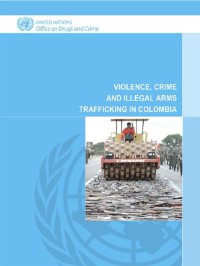Editors: Ernesto U. Savona and Marina Mancuso
Project FIRE – Fighting Illicit firearms trafficking Routes and actors at European level (www. fireproject.eu) – was carried out with the financial support of the European Commission, DG Home Affairs, within the Prevention of and the Fight against Crime (ISEC) Programme. The research is an exploratory study on the illicit trafficking of firearms (ITF) in the EU. Based on the results obtained, it also provides recommendations on how to improve the fight against and the prevention of ITF. For the purposes of the study, ITF has been defined as every case in which the illicit acquisition, sale, delivery, movement or transfer of firearms, their parts or ammunition occur from, to, or within the territory of the EU.
Milano: Transcrime – Università Cattolica del Sacro Cuore, 2017. 116p.





















